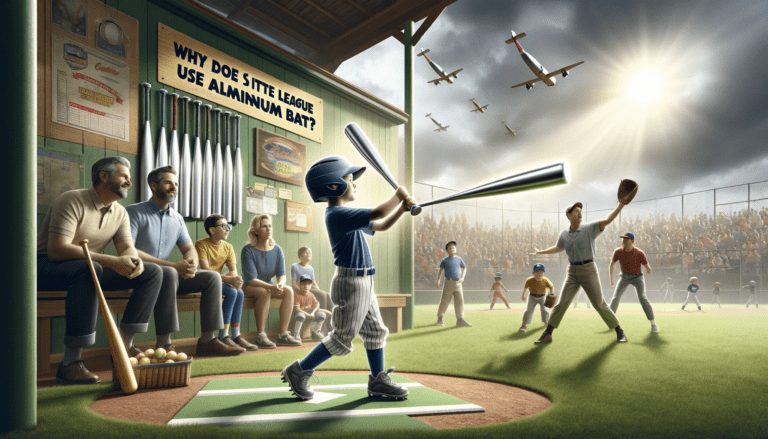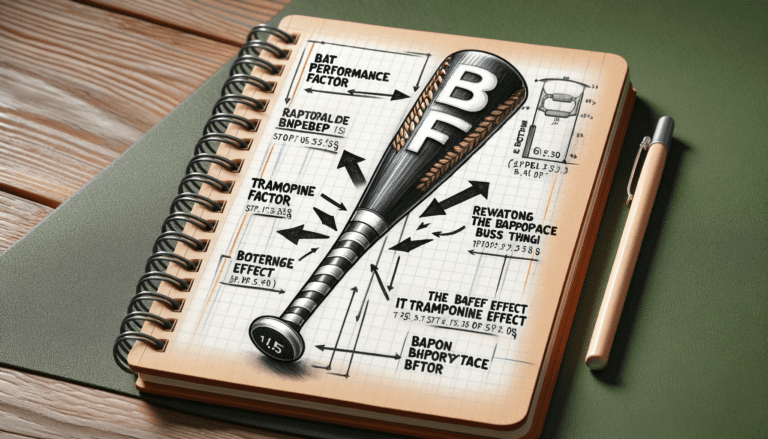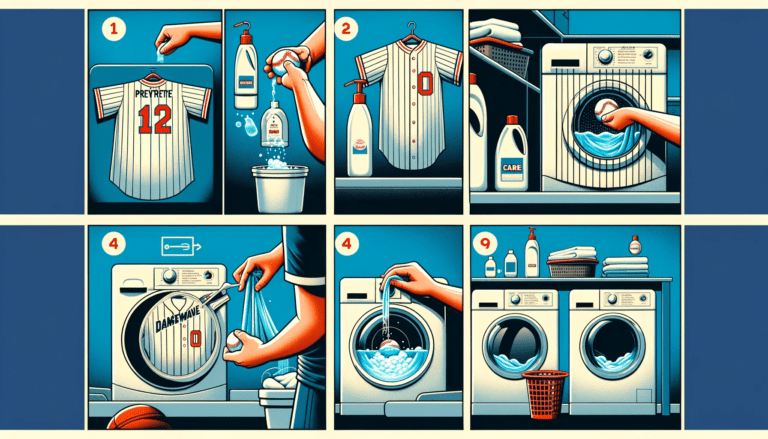What is the Difference Between Softball and Baseball Cleats?
Softball and baseball may seem similar, but their cleats are designed differently. Using the wrong size baseball cleats can lead to poor performance and even injuries.
Have you ever wondered why softball players and baseball players wear different cleats? It’s not just a fashion statement – the cleats are tailored to the unique demands of each sport.
Softball cleats are typically lighter and more flexible, allowing for quick movements and agility on the field.
Baseball cleats, on the other hand, are sturdier and provide more ankle support for the intense lateral movements and pivoting required in the game.
Understanding the differences between softball and baseball cleats can help you make an informed decision when purchasing the right footwear for your sport.
In this article, we’ll explore the key distinctions, including materials, construction, and features, so you can perform at your best and reduce the risk of injuries.
Key Takeaways
- Softball and baseball cleats differ in design and regulatory standards, with each sport having unique requirements that affect player performance.
- Cleat materials and patterns are tailored to the specific needs of softball and baseball players, with variations in traction and ankle support.
- Regulations for cleats vary by level of play, from high school to professional leagues, and must adhere to international equipment standards.
- The choice of cleats can significantly impact a player’s speed, agility, and safety on the field, highlighting the importance of appropriate footwear.
- Cultural and historical developments have influenced the evolution of cleats in both sports, reflecting broader trends in marketing and gender dynamics.
The Fundamentals of Cleat Design
Material Differences
When it comes to softball and baseball cleats, the materials used in their construction play a pivotal role in performance and durability.
Baseball cleats often utilize a combination of synthetic materials and leather, offering a balance between flexibility and stability.
Softball cleats, on the other hand, may incorporate more synthetic materials to reduce weight and enhance player agility.
Key differences in material composition include:
- Leather cleats are typically more durable and provide better support.
- Synthetic cleats are lighter and can improve speed on the field.
- Some cleats feature a blend of both materials to optimize performance.
Selecting the right material is crucial for players, as it directly affects the cleat’s longevity and the athlete’s comfort during play.
It’s important to consider the trade-offs between the immediate comfort of softer materials and the long-term benefits of sturdier constructions.
Cleat Pattern and Traction
The cleat pattern and traction of athletic shoe are critical for player performance, influencing stability and agility on the field.
Baseball and softball” cleats tend to differ significantly in their cleat configuration, tailored to the unique demands of each sport.
Baseball cleats typically feature a toe cleat, which helps players gain traction when running bases and making quick directional changes.
In contrast, softball cleats often exclude the toe cleat to prevent injuries from sliding.
Key aspects of cleat pattern and traction include:
- The number and arrangement of cleats
- The presence or absence of a toe cleat
- The length and shape of the cleats
These factors contribute to the grip and control a player has on different playing surfaces.
Softball fields, usually consisting of softer dirt infields, may require shorter cleats for better stability, while baseball fields with harder infields might benefit from longer cleats for deeper penetration and traction.
Players should consider their league’s regulations and the typical field conditions they play on when selecting cleats.
Ankle Support and Protection
When it comes to cleats wear athletic socks, whether for softball or baseball, ankle support and protection are paramount.
These sports involve quick directional changes and lateral movements that can put stress on the ankles.
Cleats designed with higher cuts provide additional support to the ankle area, reducing the risk of sprains and other injuries.
- High-top cleats are often recommended for players who desire extra ankle support.
- Mid-top cleats offer a balance between mobility and protection.
- Low-top cleats are preferred for their lightweight design and increased agility on the field, though they offer less in terms of ankle support.
Choosing the right level of ankle support is crucial for player safety and performance. It’s important to consider the player’s position, history of ankle injuries, and personal comfort when selecting cleats.
While infielders might opt for low-tops for speed and agility, pitchers and outfielders may lean towards high-tops for the added stability during dynamic plays.
Read Also: What is the Difference Between Baseball Cleats and Soccer Cleats
Regulatory Standards and League Requirements
High School and College Regulations
Navigating the regulations for cleats in high school and college sports can be intricate.
Metal cleats are allowed in high school baseball and have been a game-changer since the National Federation of State High School Associations (NFHS) amended its rules in 2008.
This rule change was significant for players, as it directly impacted the traction and performance on the field.
In college softball, the use of full metal spikes and cleats is also permitted, reflecting a consistency in equipment standards between high school and collegiate levels.
However, athletes and coaches must stay updated with their specific league’s regulations as they can vary and evolve.
Here’s a quick checklist for compliance:
- Verify the cleat material allowances (metal, plastic, or rubber)
- Check for any league-specific cleat pattern requirements
- Ensure the cleats meet the ankle support standards set by the league
Adhering to these guidelines not only ensures that players are competition-ready but also helps in preventing any potential injuries due to non-compliant footwear.
Professional League Specifications
In the realm of professional softball and baseball, league specifications for cleats are meticulously defined to ensure fair play and player safety.
Professional leagues often mandate the use of specific cleat types to maintain uniformity in equipment standards across teams.
For instance, metal cleats are commonly permitted in professional baseball due to the level of play and the need for optimal traction.
Key aspects of professional league cleat specifications include:
- The material and composition of the cleats
- The length and configuration of the cleat spikes
- Restrictions on modifications or enhancements
Adherence to these specifications is crucial for player eligibility and performance. Violations can lead to penalties or disqualification from play.
Players need to stay informed about the latest requirements, as they can vary between leagues and are subject to change based on evolving safety research and technological advancements.
International Play and Equipment Standards
When it comes to international competitions, softball, and baseball cleats must adhere to a specific set of equipment standards.
These standards ensure that the playing field is level and that the equipment used does not provide an unfair advantage to any team or player.
- All cleats must be inspected and approved by the governing body of the tournament.
- Cleats designed for international play often feature more universal spike patterns to accommodate different types of playing surfaces.
- Regulations may vary between different international organizations, but they generally align with the safety and performance standards set by the International Baseball Federation (IBAF) and the International Softball Federation (ISF).
Players and teams are responsible for ensuring their cleats meet these standards before competition.
Non-compliance can result in penalties or disqualification, emphasizing the importance of understanding and adhering to international equipment regulations.
Read Also: What is the Difference Between Football Cleats and Baseball Cleats
Performance and Mobility on the Field
The Impact of Cleat Design on Player Speed
The design of cleats plays a crucial role in a player’s speed on the field. Baseball and softball cleats are tailored to maximize efficiency and acceleration during gameplay.
While both sports require quick bursts of speed, the cleat design can significantly influence a player’s ability to sprint and change direction swiftly.
Key factors in cleat design that affect speed include:
- The number and arrangement of cleats on the sole
- The material used in the cleat’s construction
- The overall weight of the cleat
Lightweight materials and strategic cleat patterns are essential for players who rely on speed. A lighter cleat can help reduce the energy required for each stride, allowing for quicker movements and faster sprints.
Additionally, the pattern and shape of the cleats can improve traction, which is vital for explosive starts and sudden stops.
Players need to choose cleats that not only fit well but also complement their playing style and the demands of their specific position on the field.
Agility and Ground Interaction
The design of soccer cleats also plays a pivotal role in a player’s agility and their interaction with the ground.
Cleat configuration can significantly affect a player’s ability to change direction quickly and maintain stability during play.
This is particularly important in sports like softball and baseball, where quick lateral movements and rapid changes in direction are frequent.
- The Curvilinear Ability Test (CAT), for instance, measures a player’s capability to run bases effectively, highlighting the importance of cleat design in facilitating these movements.
Cleats that offer optimal traction without impeding movement allow players to navigate the field with confidence.
The studs’ placement and shape are engineered to enable swift pivots and sprints, while also minimizing the risk of slipping or losing balance. This delicate balance between traction and mobility is crucial for peak athletic performance.
Injury Prevention and Player Safety
The design and construction of football cleats play a pivotal role in preventing injuries on the field.
Good baseball and softball cleats support the arch to prevent pain, which is especially beneficial for players like catchers who are in a squatting position frequently.
Key factors in cleat design that contribute to player safety include:
- Adequate cushioning to absorb shocks
- Proper fit to avoid blisters and sprains
- Stability features to prevent ankle rolls
Players need to choose cleats that offer a balance of comfort and protection to minimize the risk of injury during play.
Regular inspection and maintenance of cleats can also ensure they provide the necessary safety features throughout their use.
Conclusion
In conclusion, while softball and baseball share many similarities, their interchangeable cleats also reveal subtle yet important differences tailored to the unique demands of each sport.
From the cleat pattern designed to accommodate the distinct playing surfaces to the variations in cleat length for optimal traction, understanding these distinctions is crucial for athletes looking to maximize their performance and safety on the field.
Whether you’re an infielder mastering the Infield Fly Rule or a batter aiming for extra bases, the right pair of cleats can make a significant difference in your game.
As we’ve explored the nuances between softball and baseball cleats, it’s clear that the right equipment is not just about preference, but about playing the game with the best possible advantage.
Frequently Asked Questions
What are the main differences between softball and baseball cleats?
The primary differences include the cleat pattern and traction, with baseball cleats often having a toe cleat for better push-off, which is not allowed in most softball leagues. Additionally, materials and ankle support can vary, with softball cleats sometimes being more flexible to accommodate different playing styles.
Are softball and baseball cleats interchangeable?
While they can be similar, they are not always interchangeable due to league regulations and the presence of a toe cleat in baseball cleats, which is typically not permitted in softball.
How do cleat regulations differ between high school, college, and professional leagues?
Regulations can vary significantly, with each level of play having its own set of rules regarding cleat sizing, materials, length, and design to ensure safety and fairness in the game.
Can the design of cleats really impact a player’s performance on the field?
Yes, cleat design can affect traction, agility, speed, and overall performance. The right cleats can enhance a player’s ability to maneuver on the field and reduce the risk of injury.
How have cleats evolved in softball and baseball throughout history?
Cleats have evolved from simple spiked footwear to sophisticated gear designed for performance and safety. Innovations in materials and design have led to new cleats, that are lighter, more durable, and tailored to the specific needs of each sport.
What should I consider when choosing cleats for softball or baseball?
When selecting cleats, consider your position, playing style, comfort preferences, and the cleat regulations of your league. It’s also important to think about the maintenance and longevity of the cleats you choose.







